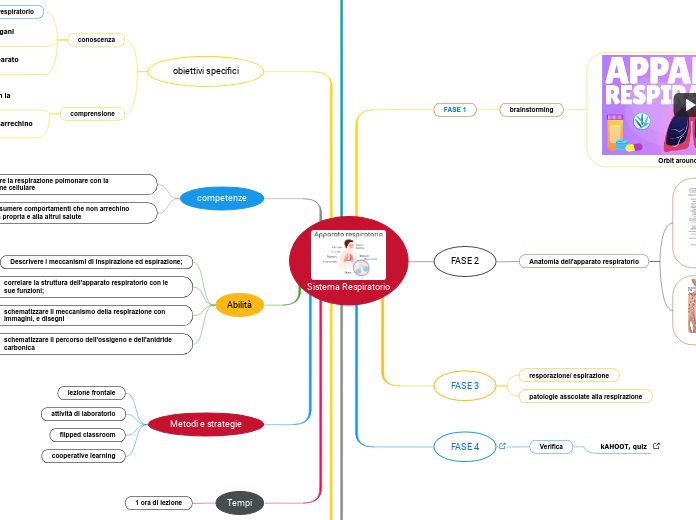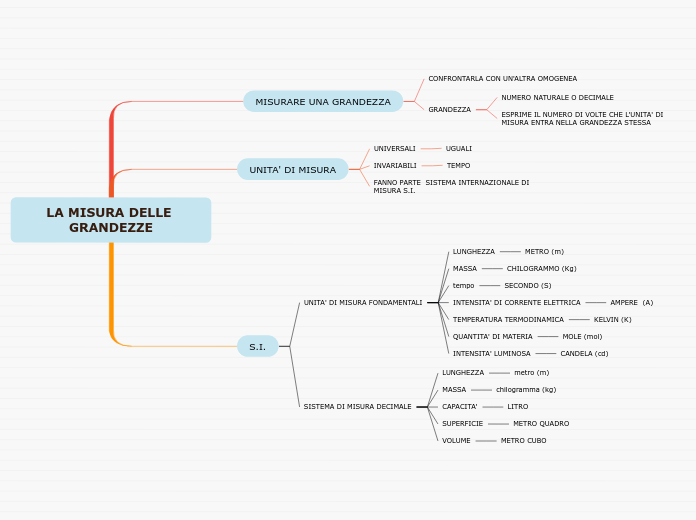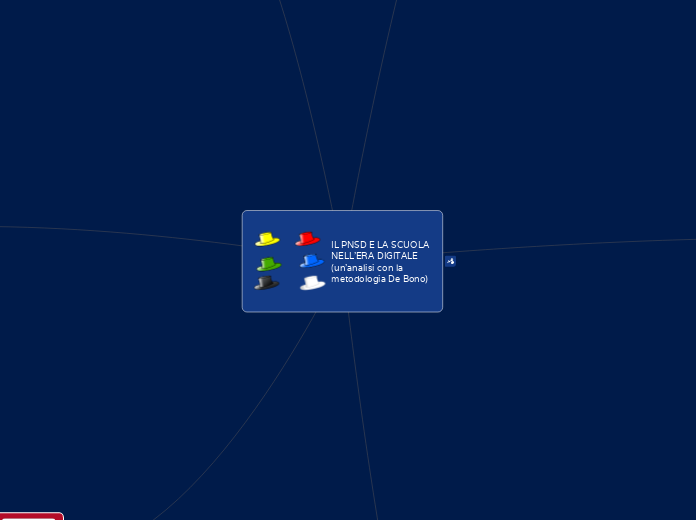Sistema Respiratorio
The Solar System is the gravitationally bound system of the Sun and the objects that orbit it, either directly or indirectly. Of the objects that orbit the Sun directly, the largest are the eight planets, with the remainder being smaller objects, the dwarf planets, and small Solar System bodies.
Autovalutazione
autovalutazione del docente
autovalutazione dell'alunno
verifica
Test a risposta multipla con KAHOOT a squadre con l'utilizzo di un tablet
Tempi
1 ora di lezione
Metodi e strategie
cooperative learning
flipped classroom
attività di laboratorio
lezione frontale
Abilità
schematizzare il percorso dell'ossigeno e dell'anidride carbonica
schematizzare il meccanismo della respirazione con immagini, e disegni
correlare la struttura dell'apparato respiratorio con le sue funzioni;
Descrivere i meccanismi di inspirazione ed espirazione;
competenze
obiettivi specifici
Saturn is known most for its rings.
Galileo Galilei first thought it was an object with three parts: a planet and two large moons on either side.
Not knowing he was seeing a planet with rings, the stumped astronomer entered a small drawing — a symbol with one large circle and two smaller ones — in his notebook.
The rings are made of ice and rock and scientists are not yet sure how they formed. The gaseous planet is mostly hydrogen and helium.
comprensione
Sapere assumere comportamenti che non arrechino danno alla propria e alla altrui salute
Confrontare la respirazione polmonare con la respirazione cellulare
How long does it take for Saturn to go around the sun?
conoscenza
Conoscere le principali malattie dell’apparato respiratorio
Sapere quali sono le funzioni dei vari organi dell’apparato respiratorio
conoscere la struttura dell'apparato respiratorio
Our Solar System has eight “official” planets which orbit the Sun.
Each planet is at a different distance from the sun. Name its position.
obiettivi generali
Uranus is an oddball. It has clouds made of hydrogen sulfide, the same chemical that makes rotten eggs smell so foul.
It rotates from east to west like Venus. Its tilt causes extreme seasons that last 20-plus years, and the sun beats down on one pole or the other for 84 Earth-years at a time.
Methane in the atmosphere gives Uranus its blue-green tint. It also has 13 sets of faint rings.
acquisire consapevolezza dei rischi per la salute legati al comportamento
imparare ad esprimersi con il linguaggio scientifico appropriato
Migliorare la conoscenza relativa al proprio corpo ed al suo funzionamento;
FASE 4
Earth is a water world, with two-thirds of the planet covered by oceans.
It's the only world known to harbor life.
Earth's atmosphere is rich in nitrogen and oxygen.
Its name originates from 'Die Erde,' the German word for 'the ground.'
Earth may once have had two moons, nowadays it has just one.
Verifica
kAHOOT, quiz
How long does it take for Earth to go around the sun?
FASE 3
Venus is Earth's twin in size and has no moons.
Its surface has various mountains and volcanoes. Because of its thick, toxic atmosphere that's made of sulfuric acid clouds, Venus is an extreme example of the greenhouse effect. The average temperature on Venus' surface is 900 F (465 C).
Venus spins slowly from east to west, the opposite direction to most of the other planets.
The Greeks believed Venus was two different objects — one in the morning sky and another in the evening. Because it is often brighter than any other object in the sky, Venus has generated many UFO reports.
patologie asscoiate alla respirazione
resporazione/ espirazione
FASE 2
Mercury is the smallest, only a little bit larger than Earth's moon. Mercury has no moon.
It experiences dramatic changes in its day and night temperatures: Day temperatures can reach a scorching 840 F (450 C), which is hot enough to melt lead. Meanwhile, on the night side, temperatures drop to minus 290 F (minus 180 C).
It also has a very thin atmosphere of oxygen, sodium, hydrogen, helium, and potassium and can't break-up incoming meteors, so its surface is pockmarked with craters, just like the moon.
Anatomia dell'apparato respiratorio
Additional info
FASE 1
brainstorming
Orbit around the Sun









